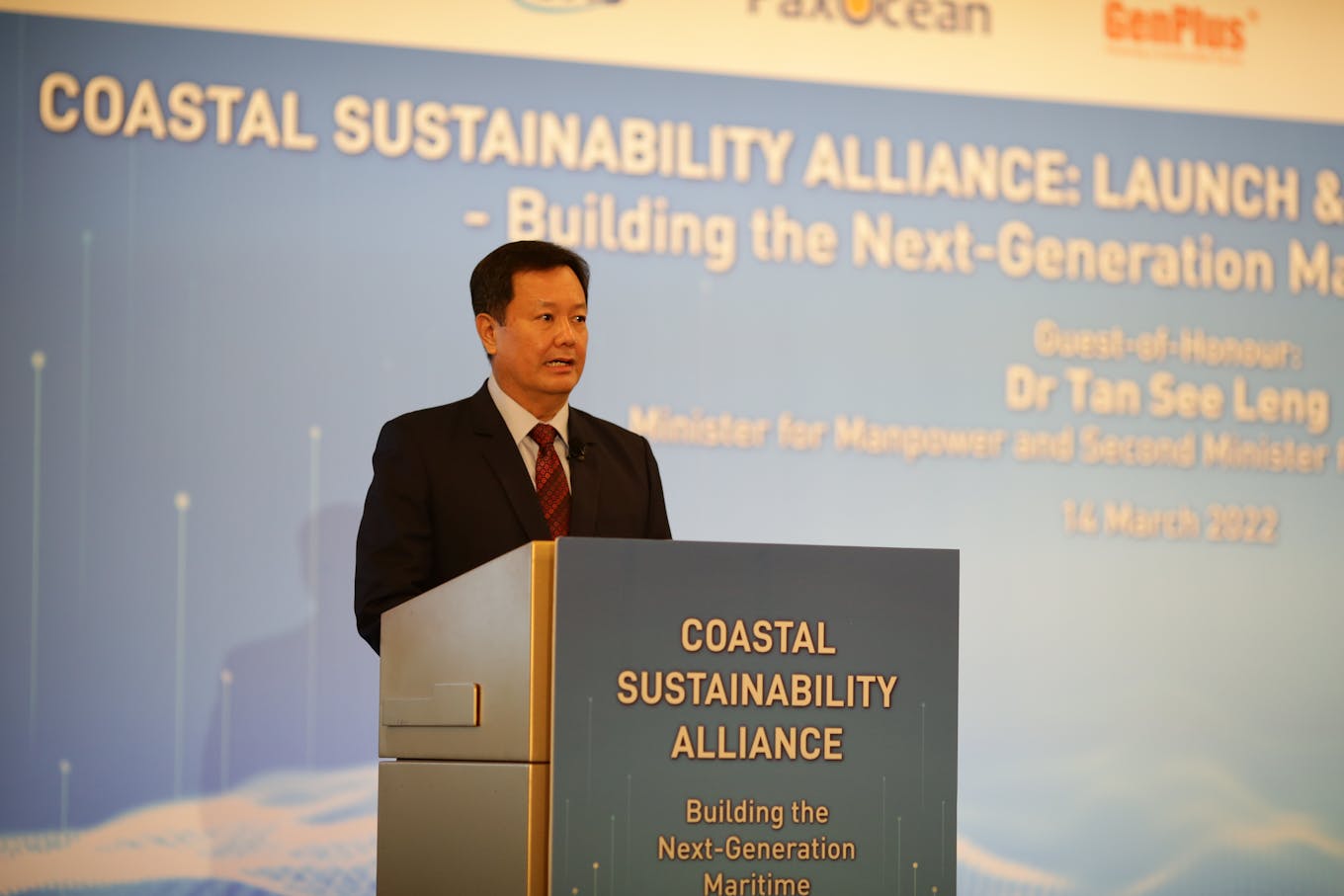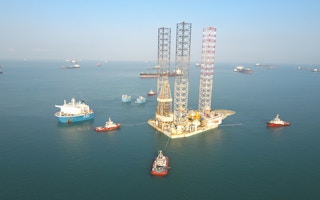As Singapore rejuvenates its fleet of diesel-powered, low-tech harbour craft with new, fully-electric ones, its marine logistics sector is investing in new coastal and offshore wireless charging capabilities to ensure that the new vessels can refuel quickly.
To continue reading, subscribe to Eco‑Business.
There's something for everyone. We offer a range of subscription plans.
- Access our stories and receive our Insights Weekly newsletter with the free EB Member plan.
- Unlock unlimited access to our content and archive with EB Circle.
- Publish your content with EB Premium.
Battery swapping, an idea that has just begun to pick up pace in the electric vehicle (EV) industry, is also being considered as an option, even as the technologies for doing so at sea have not yet matured. Industry players told Eco-Business that existing platforms are too expensive, but companies with energy storage and battery development expertise are being roped in to test out prototypes that are safe and more cost-effective for local coastal marine use.
The series of proposals are part of a strategic blueprint that the Coastal Sustainability Alliance, a new industry-led group unveiled on Monday. More than S$20 million (US$14.7 million) will be invested to revamp Singapore’s coastal logistics system, to accelerate the sector’s decarbonisation and electrification efforts.
The alliance envisions a comprehensive network of nearshore e-charging points to be built along the Singapore coastline. Later this year, it will reveal the design concept of a fleet of 10 custom-built electric vessels that is expected to gradually phase out the country’s current 1,600 harbour craft used to deliver supplies from shore to ship. The 10 vessels will be deployed by 2025.
The long-term plan is to rejuvenate the current series of harbour tugs, bunker tankers and barges that operate in Singapore waters, to reduce their carbon emissions by up to 50 per cent, in line with the International Maritime Organisation’s decarbonisation targets for the global shipping community.

Chairperson of the CSA Council Tan Thai Yong speaking at the launch event held at Shangri-la Hotel, Singapore. Image: Coastal Sustainability Alliance
“The call for decarbonisation is more pressing than before, as shipping emissions dramatically increased during the global pandemic. Ongoing geopolitical tensions have created uncertainties and supply disruptions,” said Tan Thai Yong, chairman of the alliance’s council and chief executive of maritime engineering company PaxOcean, in a keynote speech.
Tan said that the alliance also wants to solve the problem of port congestion and aims to reduce Singapore’s coastal marine traffic by 20 per cent through fleet optimisation and renewal. Mobile floating platforms will be installed in selected locations in the waters off Singapore, and sea and aerial drones can be deployed for last-mile deliveries to reduce downtime.
PaxOcean is a member company of multinational conglomerate Kuok (Singapore) Limited Maritime Group, which is leading the alliance efforts.
Other founding members in the council include Singapore statutory board A*STAR, Jurong Port, the Technology Centre for Offshore and Marine Singapore (TCOMS), as well as companies with expertise in battery management and electrification, such as GenPlus, Sea Forrest Power Solutions and TES.
Prototype for offshore e-charging to be ‘ready in a year or two’
The formation of the alliance comes as the Maritime and Port Authority of Singapore announced a S$300 million (US$221 million) nationwide maritime decarbonisation blueprint for 2050, a first for the republic.
George Lee, chief executive of Sea Forrest Power Solutions, a marine and offshore project management company that has pivoted towards decarbonisation in recent years, said that Singapore has aspirations to be “top of the game” in maritime logistics electrification. “There is, however, an urgent need to get the momentum going, otherwise it does not justify the high costs of redesign,” he said.
Sea Forrest is helping to build Singapore’s wireless charging points onshore and at sea. They will be accessible to hybrid and fully electric vessels, which are expected to be future-proofed to take environmentally sustainable energy sources such as solar and tidal fuel. The implementation is currently in the proof-of-concept stage, though for offshore charging, Lee said that more time is needed, and a prototype would only be available in a year or two. “At sea, the transmitter and receiver will be in constant motion. It is a difficult technical challenge that we have to resolve.”
Offshore charging is not a new technology, though there is a clamour for more affordable solutions. “There are systems out there that are very expensive, and that are very difficult for our coastal vessels to use sustainably,” said Lee. “We want to work out a system that is cheap enough and economical for use.”
Maritime batteries repurposed from EV batteries
The alliance wants to close the loop on the maritime supply chain too. It is looking into repurposing EV batteries into modular packs with three times the energy density for maritime use.
From all-electric vessels to hybrid solutions, an increasing number of newbuilds now rely on batteries to reduce emissions, maintenance and fuel costs. Technologies that will enable safe and efficient battery swaps, however, are still nascent, said Lim Ming Chiat, managing director of GenPlus, a Singapore-based company which specialises in energy storage systems.
“We have all heard about rapid swaps that happen on land, and already there are concerns about safety,” he said. “Imagine if you are at sea and the boats are rocking, that will be much more challenging. We will need to find a mechanism to allow it to be done properly.”
Right now, for electric cars, battery swaps are done by driving the vehicle into a booth where the depleted battery is removed and replaced with a fully charged power pack. At newer facilities, the whole process is automated and can be completed in a matter of minutes. If applied to maritime logistics, the method is expected to shave time off refuelling and allow autonomous electric vessels to make multiple deliveries.
“
There are systems out there that are very expensive, and that are very difficult for our coastal vessels to use sustainably. We want to work out a system that is cheap enough and economical for use.
George Lee, CEO, Sea Forrest Power Solutions
GenPlus is helping to source a suitable material to repurpose the maritime batteries in a cost-effective way. Lim said that it is a promising proposition to work on, though challenges remain in integrating these batteries with the newly-designed harbour crafts. “We will have to work with the vessel designers to make it realistic,” he said.
The Coastal Sustainability Alliance also said that the rejuvenation of the marine logistics system is expected to create new jobs; it will work with relevant government agencies to reskill the maritime and sea transport workforce. “Workers trained in vessel electrification and marine battery technologies will have transferable skills across sectors, enhancing their job mobility. It is also critical to nurture the next generation of maritime talent,” said Tan.








